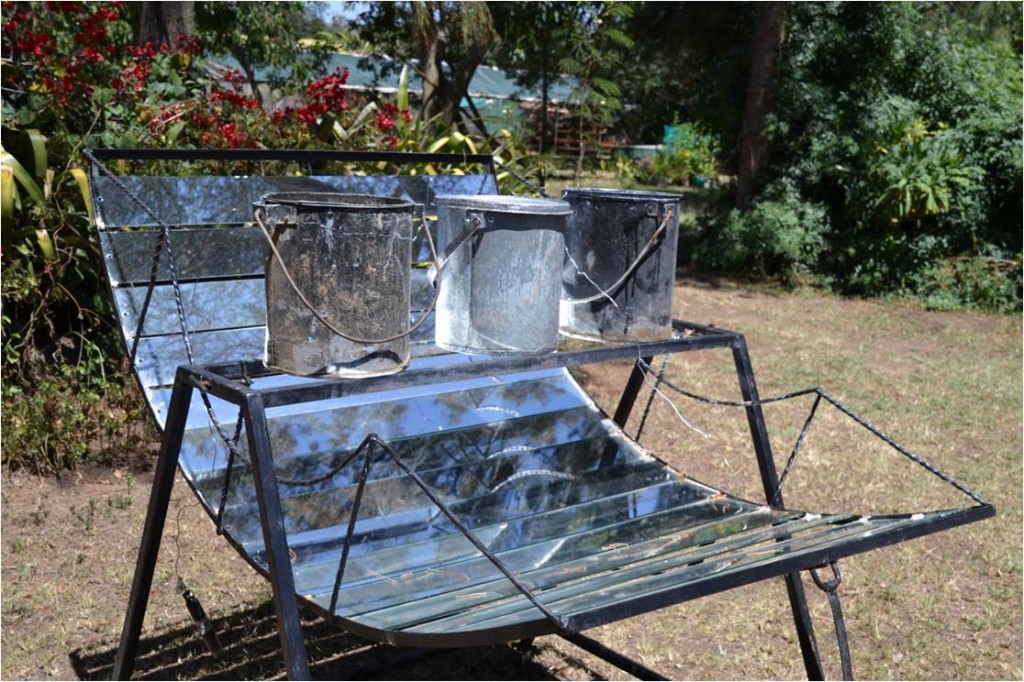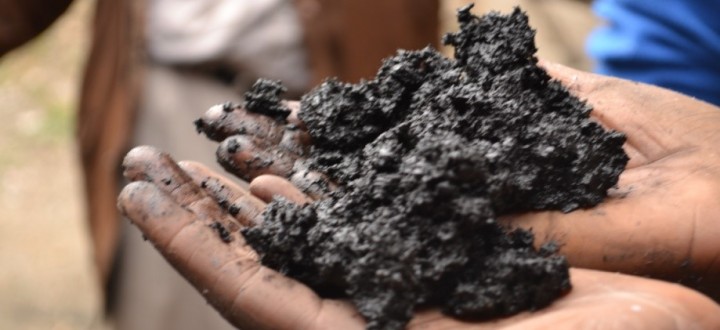This is the final piece in a three-part series about innovations in global sanitation, following the Unclogging Blockages in Sanitation conference in Kampala, Uganda. Read part two here.
With a disposition as sunny as her home state of Texas, the effervescent Emily Wood is harnessing the power of the sun itself to clean up the messy business of sanitation.
At the Unclogging the Blockages in Sanitation conference, I quickly learned that, when it comes to the business of sanitation, the toilet is just the beginning. In fact it’s the easy part; the blockage in sanitation is actually in the removal and treatment of human waste. In developed markets, large scale municipalities have successfully created systems to treat feces; but large treatment plants are expensive and therefore non-starters in less developed corners of the world. Decentralized and cheaper treatment models and technologies are needed to fill the gap.
Emily’s story started during her time as an engineering student at Georgia Tech. During her junior year, neighboring Emory University approached Georgia Tech’s engineering department to partner on finding a solution to a problem they had uncovered. Emory was conducting a study on composting toilets in Central America. Through the study, they discovered an interesting and disturbing statistic. They found that there was a significantly higher rate of humans infected with helminthes worms in areas where compost toilets were being used as compared to areas that had traditional pit toilets. The compost was not breaking down completely and people were getting sick from using the compost on their crops. Knowing that heating anything to a high enough temperature will kill anything, they wanted to partner with the engineers at Georgia Tech develop a heat-centered solution to the compost bacteria. After graduation, Emily and a few fellow engineering students went off to Chile to tackle the problem. The team determined that concentrated solar power could heat feces to a high enough temperature that would kill dangerous pathogens in the hours of a sunny day.

The team determined that concentrated solar power could heat feces to a high enough temperature that would kill dangerous pathogens in the hours of a sunny day.
As Emily started to learn more about the sanitation industry, she discovered that, while the market in basic sanitation was flush with innovations in toilets and marketing, there was a huge gap in innovation when it came to the treatment of human waste.
It was here that the idea of Sanivation was born. During her work and studies, Emily found that there were many solutions that could treat an individual family’s feces, but few good models that could be scaled to treat the human waste of an entire village. What’s more, the predominant business model, turning feces into fertilizer, had not been shown to generate large profits.

Sanivation rents toilets to families in the villages surrounding Lake Naivasha, who pay a weekly fee for the waste removal.
With Sanivation, Emily is setting out to address both of these challenges simultaneously. Similar to WSUP Enterprises, Sanivation rents toilets to families in the villages surrounding Lake Naivasha, who pay a weekly fee for the waste removal. There are slight differences to the model: Sanivation’s toilets are both mobile and urine-diverting, meaning urine is collected in a separate container from feces. Emily explained that mobile toilets are better options in high-density urban slums or refugee camps as families relocate often. The urine diversion sets the process up for the next step— treatment.
An engineer, Emily knew that dry human feces has as a higher calorific value than charcoal—for non-engineers like myself, this is the amount of heat released during the combustion of a substance. As a result, carbonized organic waste creates burning fuel that is even more efficient. Additionally, the little moisture that remains in feces after it is heated creates a sticky material that is naturally binding. Disgusting, yes, but it also makes the substance ideally suited for making briquettes. Armed with this information, Sanivation decided to turns human waste into briquettes to be used for fuel. Emily believes that briquettes for fuel will prove to be a more profitable business product than the current trend of turning human waste into fertilizer.
Sanivation collects human waste from participating residents once or twice a week. For every 100 households, they construct simple solar treatment locations where the waste is deposited. Already separated from the urine and collected in metal buckets, the feces is ready to be placed directly onto solar concentrators comprised of parabolic mirrors that reflect sunlight. The containers are left on the solar concentrators for a full day of sun exposure, at which point the waste has been heated to over 80 degrees Celsius. At that temperature, all pathogens are neutralized and the waste is almost completely dried; just enough moisture remains for briquette formation.
In the same location, the now-dehydrated feces is combined with charcoal dust or organic waste products, like ground up corn husks, and is pressed into cylindrical rings and then cut into small wheel-shaped briquettes. The briquettes are then sold back to the community at a price point lower than charcoal, making it the community’s fire fuel of choice.

Dehydrated feces is combined with charcoal dust or organic waste products, like ground up corn husks, and is pressed into cylindrical rings and then cut into small wheel-shaped briquettes.
I asked Emily if people were resistant to buying briquettes that are made from their own waste. Sanivation understands that it’s a difficult sell. When they first go into a community, they begin by giving participating families a few briquettes to test out. Almost without fail, residents come back excited that the briquettes burn longer and at a lower temperature than charcoal, making them ideal for cooking. Sanivation then explains where the briquette comes from.
“At first we always get a weird face when we tell them, but then they usually just shrug it off. They quickly recognize the quality and effectiveness of the product and buy-in.” The solar collection and treatment is done in the community so they get to see the entire process from start to finish, where they can learn the science behind the process and understand that heating a substance such as feces kills any dangerous pathogens and makes it safe to use as fuel. While it may still sound gross—it’s not nearly as gross as what usually happens to most of the world’s human waste—ending up in our rivers, water sources, and on our crops.

It turns out, the sanitation business is just one long value-chain that starts in a household and ends in the fire. Organizations like Water for People, WSUP, and Sanivation, and the local businesses and entrepreneurs they support, are pioneering new ways to bring human waste full circle in a way that delivers sustainable value through multiple pathways if appropriately directed.
The business community is well poised to help move the needle forward, and MBAs Without Borders is well positioned to provide this kind of support. Sanitation is by no means glamorous – but it’s a challenge that cannot be ignored. Addressing it effectively will take creativity and ingenuity. To effectively integrate these solutions into the communities that need them most, leaders must be willing to get their hands dirty.
Jailan Adly
Jailan Adly is the Director of MBAs Without Borders where she is responsible for the overall design and implementation of the MBAs Without Borders program. In addition, she manages various International Corporate Volunteer programs for clients such as IBM, FedEx, John Deere, Medtronic, and Novartis in Morocco, Tanzania, South Africa, Tunisia, and India.




